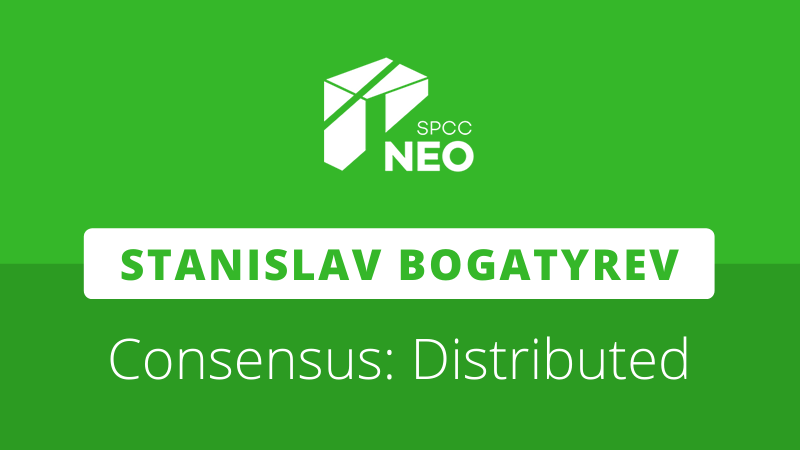
Stanislav Bogatyrev, co-founder and CIO of Russian R&D team Neo St. Petersburg Competence Center (Neo SPCC), recently gave a presentation at the Consensus: Distributed virtual event on May 11th, 2020.
In the presentation, titled “NeoFS: Decentralized Storage for A Real Economy,” Bogatyrev provided viewers with an introduction to the NeoGo project, an underlying component of its NeoFS infrastructure, before giving an overview of the decentralized storage platform itself.

NeoGo
Bogtyrev began the presentation with an introduction to the NeoGo project:
“It is a full Neo node and VM implementation in the Go programming language, which is fully compatible with the .NET reference implementation and supports all Neo 3.0 features.”
The NeoGo project is also equipped with an SDK, which can be used alongside the Neo Blockchain Toolkit for VS Code by NGD Seattle in order to create, compile, debug, and deploy smart contracts written in Go.
Bogatyrev also noted that NeoGo nodes are in stable operation alongside those running the core implementation on the Neo MainNet, and that one NeoGo consensus node is also actively participating in consensus on TestNet.
As well as being useful for Go developers looking to integrate their applications with the Neo blockchain, NeoGo nodes are also a key component of the NeoFS storage network, acting as a source of truth and synchronization.
NeoFS
Following on, Bogatyrev gave a high-level view of NeoFS, a decentralized distributed object storage service integrated with the Neo blockchain. Users, both individuals with commodity hardware and enterprises, can pay to store data or rent out unused storage space for GAS. Summarizing, NeoFS provides:
- Full control of data to users
- Transparent and reliable data transfer and storage
- Ability for users to meet data storage legislation requirements
- Incentive model driven by free market principles
- Completely open source forever (FLOSS)
“The most exciting feature of NeoFS is that it is accessible directly from NeoVM on the smart contract level. Applications are not limited to on-chain storage, and can manipulate large amounts of data without paying a prohibitive price.”
Bogatyrev also notes various technical advantages of the platform. Examples include the decision to use rendezvous hashing over a network multigraph in order to exactly calculate data locations without needing metadata or requests to other nodes.
This is enabled by the Neo blockchain’s unique single block finality, and unlike other storage platforms that use random placement with distributed hash tables, the NeoFS data placement approach provides almost infinite horizontal scalability.
Additionally, Bogatyrev introduced the interactive zero-knowledge proof protocol. Based on homomorphic hashing, this data integrity validation protocol is used to prevent data corruption across all nodes in an asynchronous manner.
Since the mechanism makes it cheaper to follow the rules than to try and cheat, NeoFS “mixes mathematical guarantees and economic incentives to build a reliable and global scale storage system.”
Through the use of a native gRPC API and gateways for popular protocols such as HTTP, S3, and sFTP, Bogatyrev noted that the solution is designed to be easily integrated into existing systems.
Future Development
To conclude his presentation, Bogatyrev shared Neo SPCC’s vision to build a complete technology stack for truly decentralized applications:
“In the long term, we hope to create more ecosystem components that will allow developing truly decentralized applications, solving any problems that are nowadays solved with a centralized approach.”
“Our next target is decentralized serverless computing. While NeoFS allows offloading heavy data, Lambda service will allow offloading heavy computation. Then, together with NeoFS used for storage, it will become a foundation for a decentralized database.”
“This would cover almost all needs of modern applications on their way to becoming decentralized. That is what we call the true cloud platform for the real economy, that will inevitably make the economy smart.”
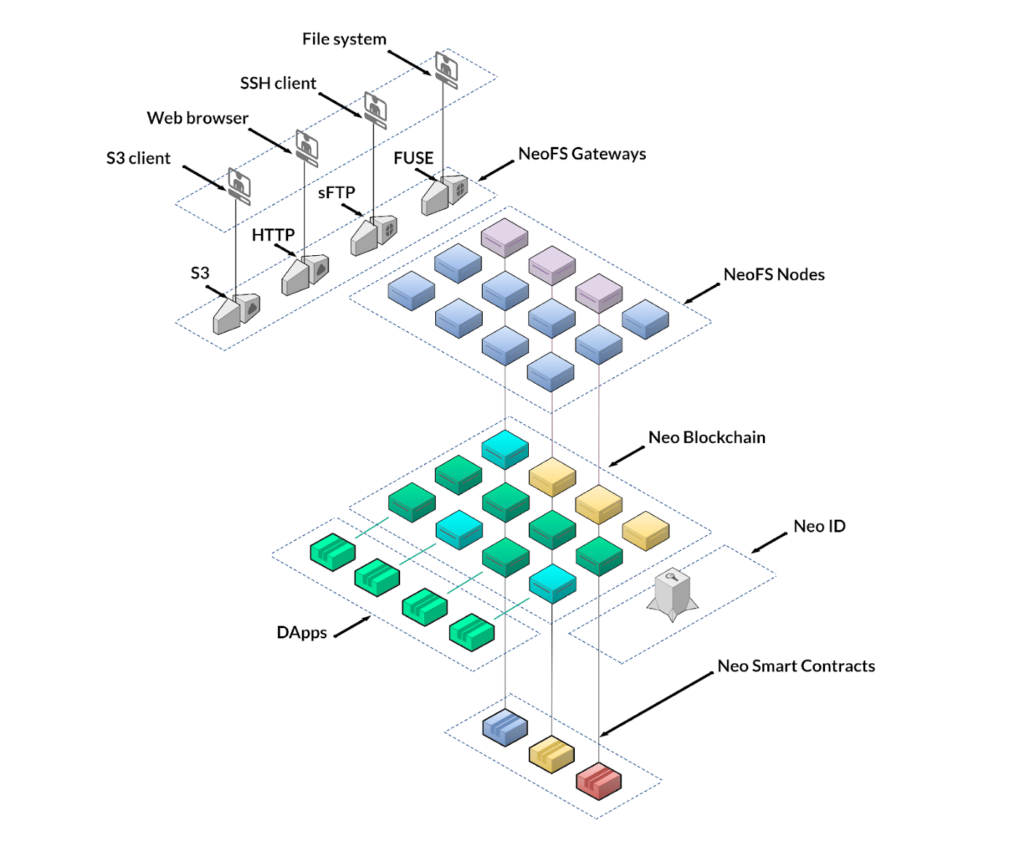
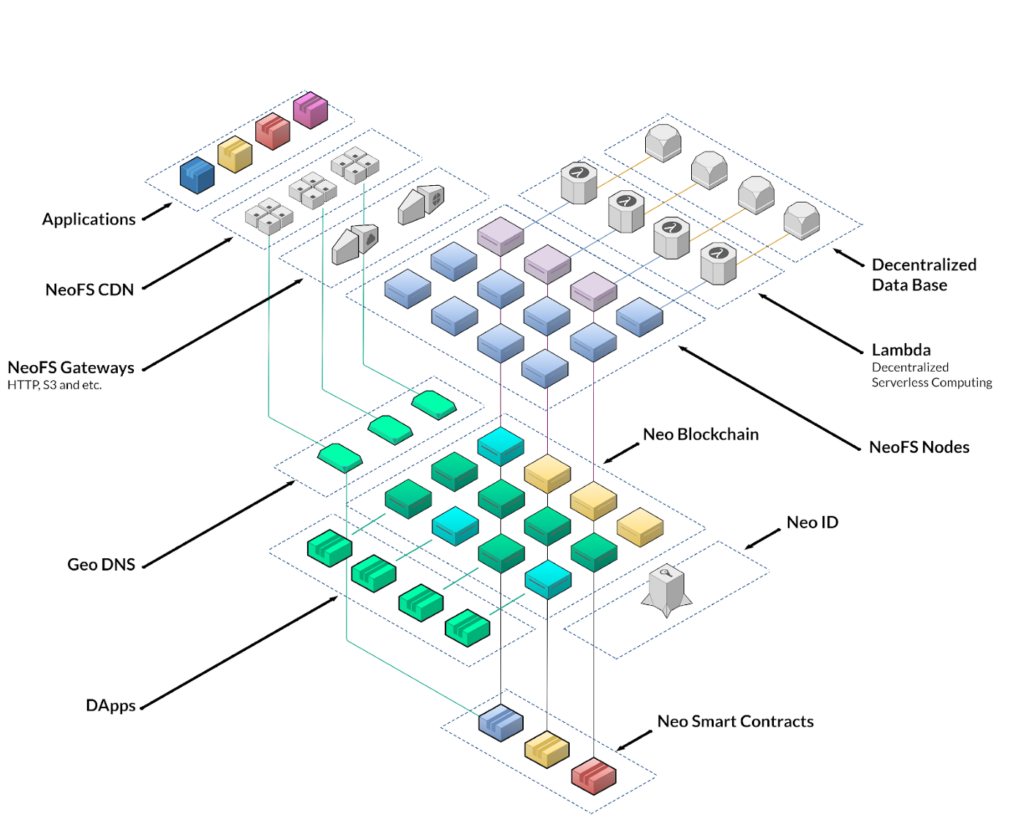





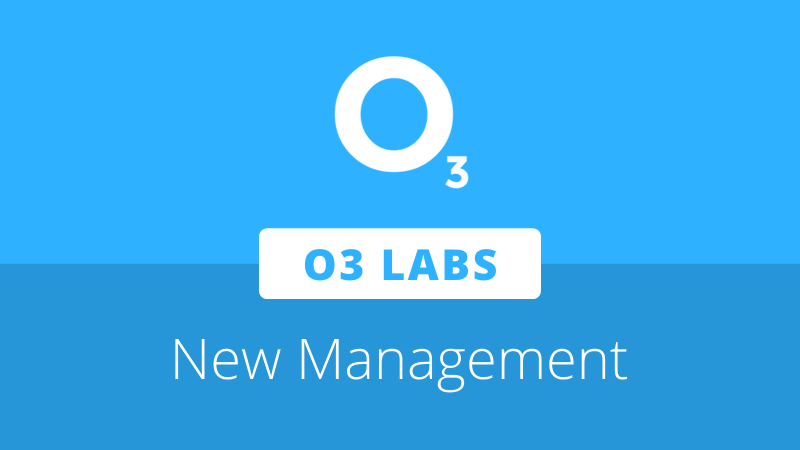
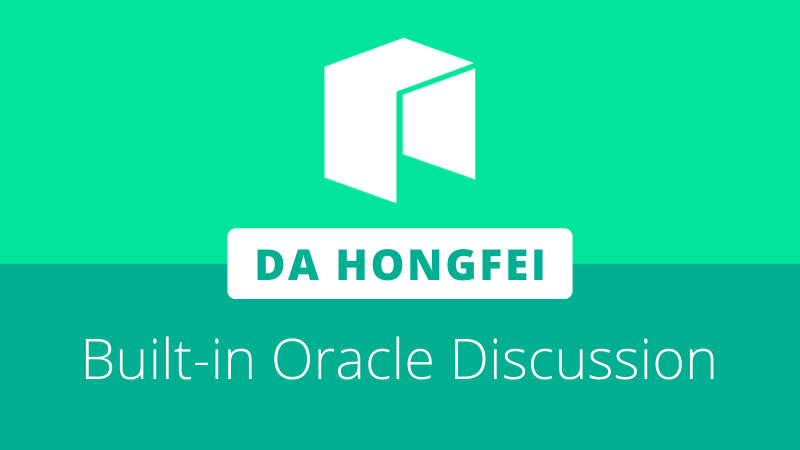
About The Author: Brett Rhodes
Brett is a blockchain enthusiast and freelance writer who originally began producing content for the gaming & eSports industries. Now he spends most of his time contributing in the Neo ecosystem.
More posts by Brett Rhodes